Table of Contents
TIGERS
Amazing Pictures & Fun Facts on Animals in Nature
Our Amazing World Series
Kay de Silva
Copyright Notice
Tigers - Our Amazing World Series
Copyright 2014 by Kay de Silva - All rights reserved
Please respect the author's copyright of this work. You may use this e-book for your personal enjoyment. Like a printed book you may share it with family and friends. In so doing please do not change the format or modify the content in any way. In addition, your license to enjoy this work does not extend to re-selling, using or re-distributing this work wholly or partially for any other commercial endeavour. In all other respects, as a licensed owner of this e-book you are invited to enjoy and benefit from this work. Please support the author, by spreading the word about this work to those who could benefit by it and encouraging them to obtain a personal license to enjoy the book.
Image Credits: Royalty Free images reproduced under licence from various stock image repositories. Images produced under a creative commons licences are duly attributed.
Books in the Our Amazing World Series
Marine Life Four-Pack
Dinosaurs
Tigers
Sharks
Snakes
Spiders
Bears
Horses
Dolphins
Sea Turtles
Whales
Penguins
Marsupials
Tigers

Tigers are mammals that belong to the cat family. They are the largest of all cats. These magnificent creatures have roamed the earth for about 2 million years.
Anatomy
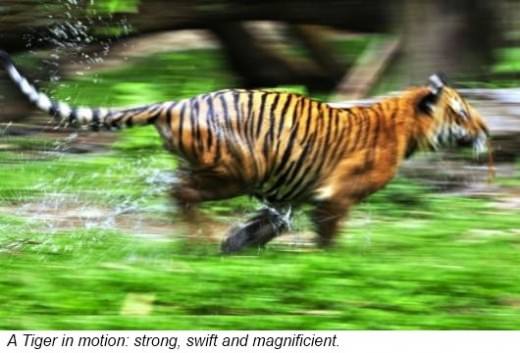
Tigers are built to be ferocious predators. Adult tigers can be about 11 feet (3 meters) in length. They weigh about 670 pounds (300 kilograms). They have large heads, muscular bodies, and powerful legs, which help them take down prey many times larger and heavier than themselves.
Habitat
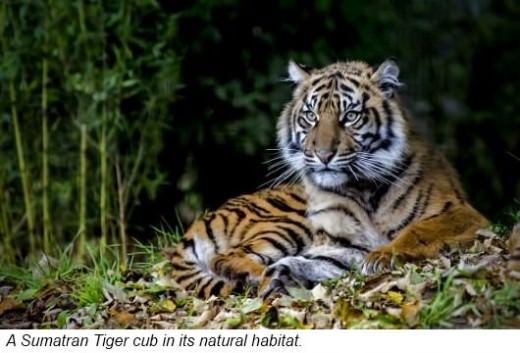
Tigers are found in a range of habitats in Asia and Far-East Russia. Different types of tigers are found in different habitats. These include rainforests, swamps, and grasslands.
All tigers need dense vegetation - that is, lots of trees, bushes, and tall grasses. They also need plenty of food and water to survive.
Camouflage
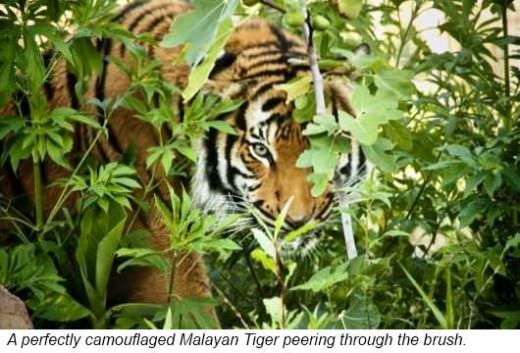
Tigers are easily recognized by the stripes on their bodies. Most tigers have over 100 stripes. The striped pattern is also found on tigers skins, so even if a tiger were shaved, the pattern would still be visible.
The patterns of tiger stripes are unique. This means that no two tigers will ever have the same striped pattern. Just like human fingerprints are used to identify humans, tigers coats are used to identify them.
Tigers markings also help them to camouflage or blend in with their surroundings. These markings are useful in hiding from their predators and also help when sneaking up on prey.
Eyesight
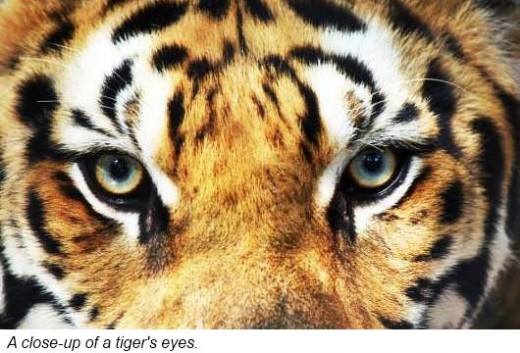
Tigers have the brightest eyes in the world. Their eyes have a mirror-like structure, which allows unabsorbed light back into the eye to produce a brighter image. This is what causes cat eyes to blaze back when light is directly shone at them.
They also have good day and night vision. Their day vision is as sharp as a humans. Their visual acuity , or ability see in detail, is not as good. At night, however, when they usually hunt, their eyesight is six times better than a humans.
Smell

Tigers have an excellent sense of smell. They, however, rarely use this sense for hunting. They use their sense of smell mainly to communicate with other tigers.
When smelling another tigers scent marks, tigers wrinkle their noses and hang out their tongues in a grimace called flehmen . Flehmen is used to draw the scent to the Jacobsons organ located in the roof of their mouth. This organ receives chemical information . In this way, tigers can sense whether the scent belongs to a local tiger or a stranger and whether the other tiger is male or female.
Roaring
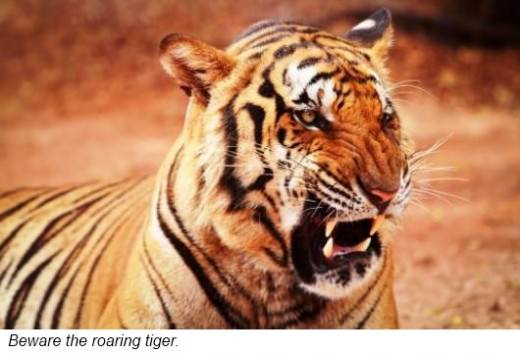
A tiger is known as a Big Cat, not just because of its size, but also because of its ability to roar. Other Big Cats include the Lion, Jaguar, and Leopard. Tigers do not always roar to show aggression or anger. Tigers also growl, hiss, and moan.
Tigers are able to make sounds below the human range of hearing. This is called infrasound. These sounds can travel across long distances and pass through solid objects, including dense forests and mountains.
Using infrasound, Tigers are known to paralyze their prey or stop them in their tracks. These sounds are so powerful that even though you may not hear the sound, you could feel it in your bones.
Swimming

Tigers love water. They are often found bathing in rivers, lakes, and ponds. They are powerful swimmers. They can cross rivers of up to 5 miles (7 km) wide. They can also swim up to about 18 miles (30 km) a day. Of all the Big Cats, only the Jaguar shares the tigers love for and abilities in the water.
Tigers dislike the heat, so they like to spend time cooling off in the water. Most Tigers will soak in water after making a kill. They may also capture their prey in the water.
Territory
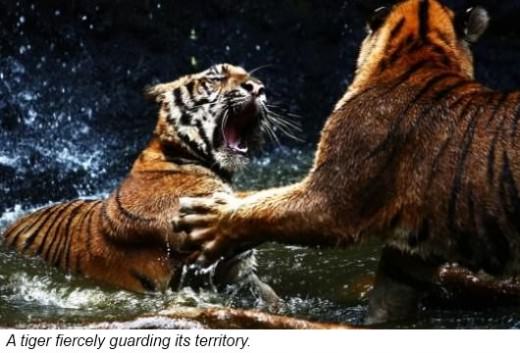
A group of tigers is known as an ambush or a streak. Finding a group of tigers is rare, as tigers are usually solitary animals. This means that they like to live alone. A tiger finds a territory or space that it considers its own and will guard it from other tigers.
Tigers are often found patrolling and marking their territories. They do this by spraying urine on bushes, trees, and rocks. In addition to leaving this foul smell, they also leave scratch marks on trees and on the ground.
Diet

Tigers mainly eat large mammals. Their favourite food is ungulates or hooved animals such as deer and wild boar. They sometimes eat smaller mammals and birds. Tigers also eat crocodiles, fish, reptiles, and other predators such as bears and leopards.
Tigers are big eaters. They can eat 100 pounds (45 kilograms) of meat a night. This is as much as 400 hamburgers! After getting their fill, tigers cover the carcass or dead animals remains with dirt. They return over several days to the




















